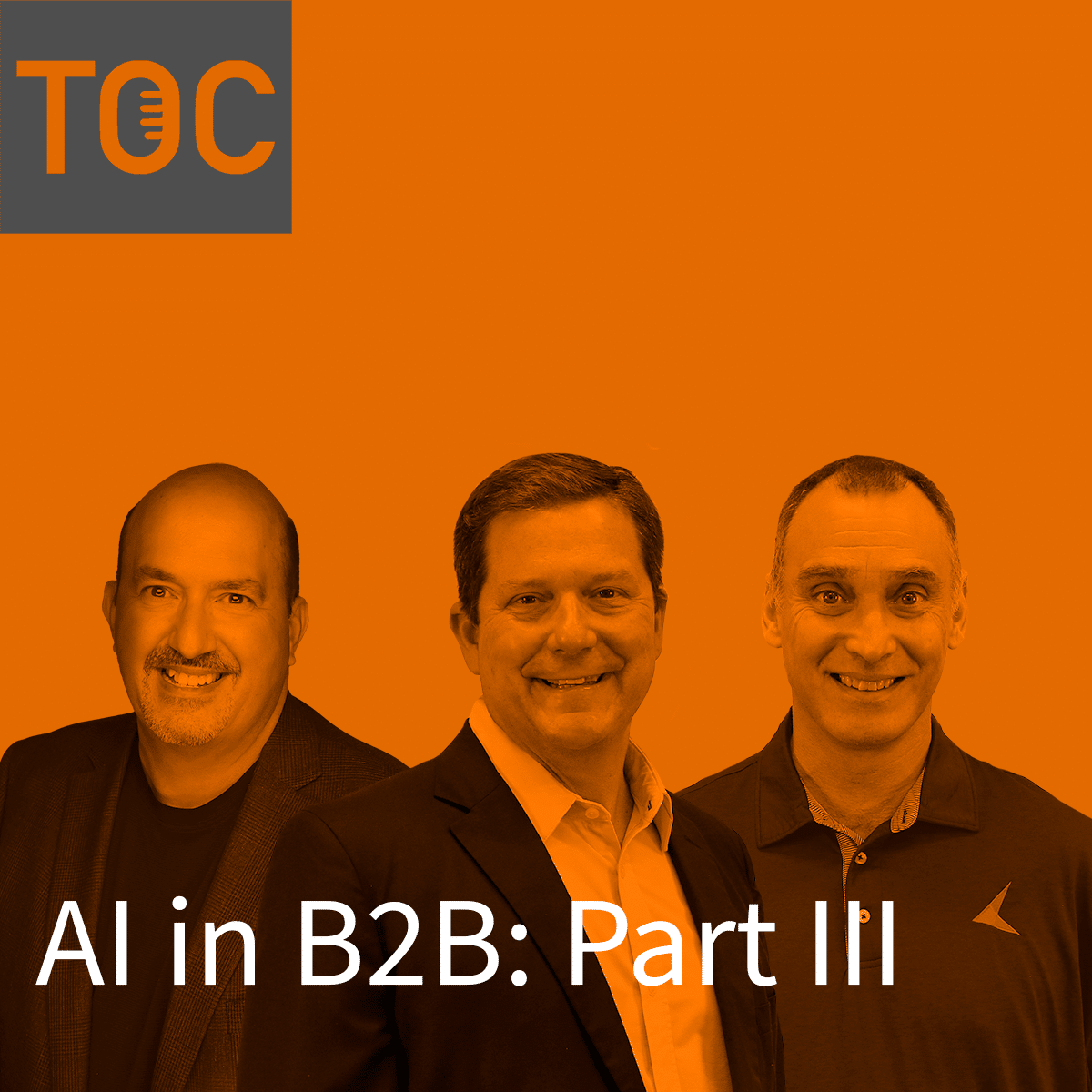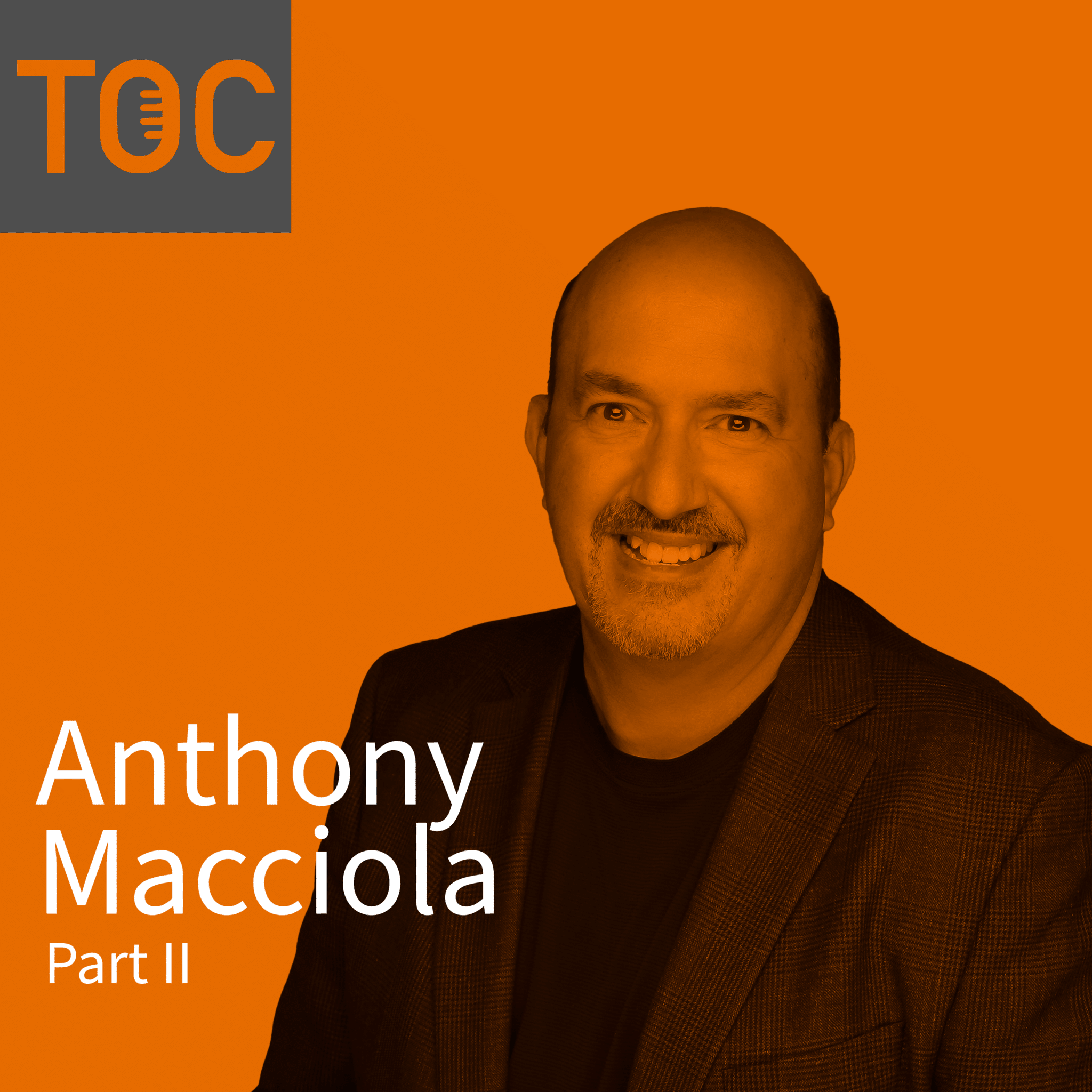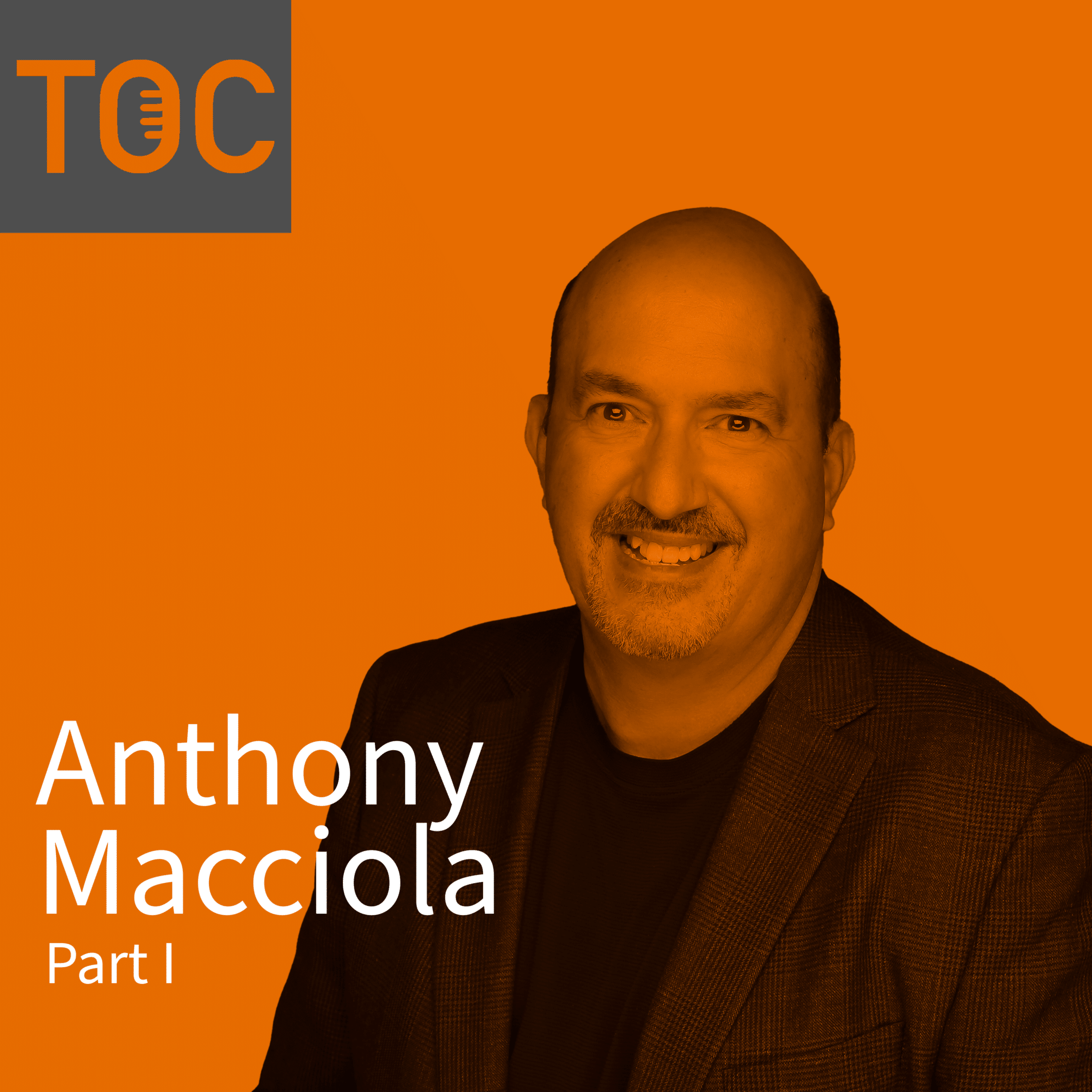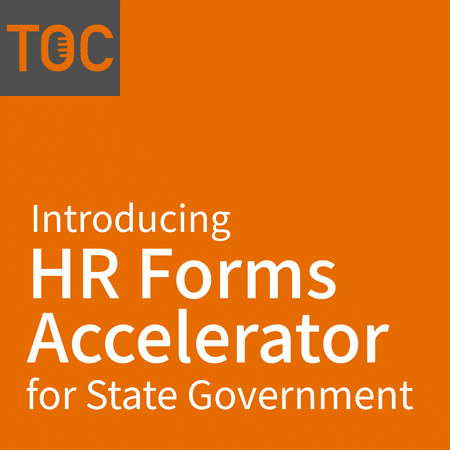This website uses cookies so that we can provide you with the best user experience possible. Cookie information is stored in your browser and performs functions such as recognising you when you return to our website and helping our team to understand which sections of the website you find most interesting and useful.
Listen now on your favorite streaming service!
presented by KeyMark
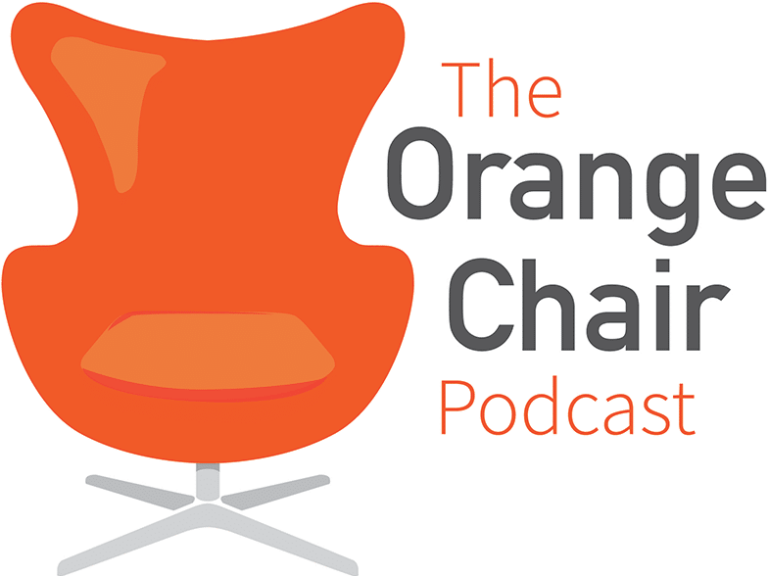
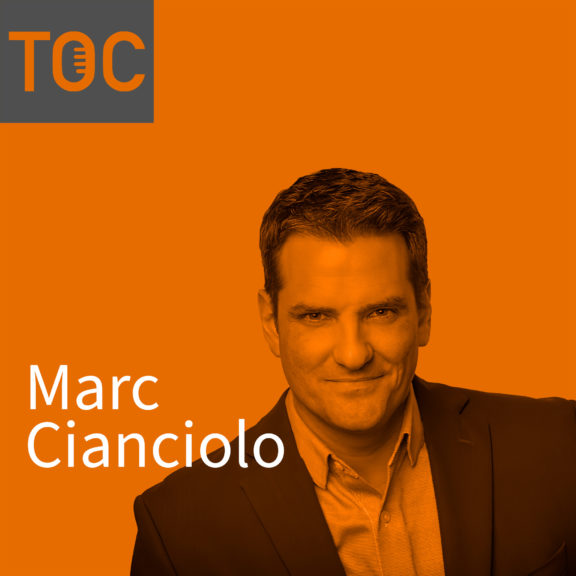
Summary
The following is a transcription from The Orange Chair Podcast, “Deep Dive into Hyland Cloud”
In this episode, we kick off our Hyland podcast series where we will discuss different Hyland Software offerings. In this episode, we sit down with Marc Cianciolo, Global Director for Cloud Sales, and Operations at Hyland to discuss Hyland’s Global Cloud Services offering. Marc discusses how cloud migration can be an advantage for some organizations and answers the questions you want to know.
To listen to the full episode or any other episode, you may do so by selecting your preferred podcast listening method on The Orange Chair Podcast Page.
Transcription
Host (19s): Hey everybody. Welcome back to The Orange Chair Podcast. Today’s episode will kick off our Hyland podcast series where we are going to focus on different offerings from Hyland Software.
Today we are going to be focusing on Hyland Global Cloud Services and we’ll be covering a lot of different information around Hyland’s cloud offering and I am so excited because our guest today is Marc Cianciolo from Hyland. So, Marc, can you tell me about yourself?
Marc Cianciolo (46s): I have been associated with the Hyland Cloud pretty much since day two of my tenure with Hyland. About 15 years ago, I joined Hyland in the sales organization and I was immediately introduced to the folks running our hosted offering and focused on customers in that regard. I haven’t looked back since.
I’ve been evangelizing the Hyland Cloud by helping Hylanders and our channel partners alike close business and really be a source of expertise when it comes to the Hyland Cloud to help bring in that business.
Host (1m 29s): I always like to ask our guests if they have a fun fact. Do you have anything that you would like to share with our listeners, maybe something fun that you like to do or a fun fact about yourself?
Marc Cianciolo (1m 41s): I like to say I was born to sell the Hyland Cloud, but we all know that would be a little bit of a stretch. I actually landed at Hyland after recognizing that the path to start as a professional actor was very limited for very few folks. So I still do maintain my membership in the Screen Actors Guild. I do commercials on the side. I have performed on stage with the Great Lakes Theater Company. I keep my hand in that as often as I can, but the Hyland Cloud pays the bills.
Host (2m 20s): So what’s your favorite production that you’ve been a part of?
Marc Cianciolo (2m 24s): I did well on stage. I performed in Antony and Cleopatra at the Cleveland Play House, and that was fun because I did a lot of workshops in Shakespeare and it was an opportunity to really flex that muscle. So that was a lot of fun. And it differs considerably from some of the commercial work I’ve done. I’ve done commercials for Office Max. So you know it is a little bit across the board.
Host (2m 53s): Well, I feel like I’m talking to a real celebrity.
Marc Cianciolo (2m 57s): Well, keep in mind, I’m still selling Hyland. So we’ll go with that, Alex.
Cloud-First Approach
Host (3m 2s): I do want to go ahead and kick off our episode and I just want to ask the question, why did Hyland decide that cloud-first was the right approach?
Marc Cianciolo (3m 16s): I think it’s a confluence of a lot of different factors. So Hyland really pioneered cloud-based at the time when enterprise content management, and now content services was cool. We actually launched in 2004 and we predate AWS by two years. A lot of our focus at the time was very forward-thinking.
A lot of our focus at the time was talking to opportunities and talking with partners like KeyMark that the cloud was coming and how they need to be prepared. I think we started to see that shift from the cloud is coming to – based on the questions our opportunities are asking of us and based on the requirements they have – that the cloud is already here.
We’re no longer really pushing the Hyland Cloud. We are now responding to more and more opportunities that are pursuing the cloud. I think that was a big cultural shift for us.
At the same time, we saw that shift align with what was taking place in the industry. Take off the table just content services in the cloud. The cloud was permeating pretty much all applications. There was a great deal of thought leadership around moving to the cloud or leveraging resources outside of your four walls in order to satisfy certain business pain.
So books like The Big Shift, talk about the shift in risks from the buyer to the supplier as a part of this cloud and SaaS momentum. And the customers really embraced that. We found ourselves talking about the cloud much more regularly, and there are advantages to the two being in the cloud for not only our customers but for Hyland and our partners as well.
It just grew into, this idea of, “This where the market is. Hyland was ahead of the curve when we launched a hosted solution 15 or 16 years ago. So let’s take it full circle and lead with this.”
Benefits of Migrating to a Hosted Solution
Host (5m 42s): I know that you mentioned that there are numerous advantages, but what are some of the benefits of migrating to a cloud-based solution for someone who’s maybe been on-premise for a majority of their time with that?
Marc Cianciolo (5m 55s): We’ve done a lot of research around this. We’ve commissioned analyst organizations to get their thoughts on it as well. There’s a whole host of advantages to being in the cloud and migrating to the cloud.
What we’re seeing is disaster recovery and business continuity are key drivers in organizations that want to ensure that their information is available and accessible when they need it most. And unfortunately, we’ve seen some situations where environmental disasters have left organizations without access to their contents because their on-premise solution was seriously impacted by floods or hurricanes.
What are hosted customers recognized was their data – while existing outside of their four walls – actually served to their advantage because they had better access to it in the event something like that happens. Disaster recovery is huge. A lot of times organizations don’t even recognize that their disaster recovery plans that they have on paper are inadequate until they need to execute. That is not the time an organization wants to learn that they are not prepared from a DR standpoint.
We’ve also seen a lot of movement based on cost savings that are available. There is a tremendous opportunity to capture a return by leveraging experts in a hosted realm, so you as an organization can focus on your core confidence.
I think that is why we’ve seen such success across all the different verticals that Hyland plays in, whether it be healthcare, financial services, insurance, higher education, government, or a slew of industries that make up our cross-industry approaches like retail and biotech and transportation.
All those customers are recognizing that they can repurpose some of the infrastructures that they have in place to more value-added activities. They can repurpose some of the human resources they have in place to more value-added activities by leveraging Global Cloud Services in the Hyland Cloud to do things like administering the environment, patching the environment, or anything and everything associated with managing that environment. Organizations are recognizing that they’re better off by having the experts do that so they can focus on their core line of business.
Identifying Improvements
Host (8m 26s): That makes sense. So what are some of Hyland’s different initiatives for the Cloud?
Marc Cianciolo (8m 33s): Oh, how much time do you have Alex? We are doing a lot. So first and foremost migrations. It is sort of apropos that your previous question leads into this because migrations are a key driver for Hyland and for Global Cloud Services.
As we speak, we have a big initiative and working with our direct sellers and working with our channel partners and our valuable partners, like KeyMark, to focus on bringing their on-premise customers to the cloud because of all of those advantages that I’ve mentioned. Anything and everything we can do to help pave the way for those on-premise customers to see the value in a SaaS solution and then make that transition seamless for them.
We’ve identified the need for improvements in operational processes. What do we need to do internally at Hyland? What do we need to do with our partners, like KeyMark, to ensure a seamless transition? A lot of it is a function of ensuring cross-departmental collaboration and cross-company collaboration between Hyland and our partners. And just making sure that all I’s are dotted and T’s are crossed because, at the end of the day, the driving factor behind migrations is customer delight.
Let’s give the customer what they need in a way that they see the value provided to the organization and let’s make it a process that is pleasurable rather than fraught with hiccups. That’s really where we’re focusing on bringing that seamless, frictionless process to all of our customers.
Cloud-Smart vs. Cloud-First
Host (10m 19s): So, speaking of a seamless transition and all of that, are there any things that customers can do to help that transition on their end? Is there anything that maybe they can prepare for to move to a cloud-based solution?
Marc Cianciolo (10m 37s): Absolutely. So we’ve spent a lot of time, and I’ve delivered a couple of different presentations at CommunityLive and some other partner events, around the concept of being cloud-smart.
It’s not enough just to have an organization be cloud-first. It’s all about being cloud-smart. It’s all about understanding what that cloud roadmap looks like for your organization. I like to use an analogy from my pre-Hyland experience.
I spent several years in management consulting for retail organizations and it never failed, I was always asked by a client, “tell me what is Walmart doing? What is target doing?” And my response was, “It really doesn’t matter because what if what Walmart is doing doesn’t work for you?” It’s not a best practice. I apply that same idea to look at the cloud. Just because one organization might be pursuing cloud in one way, that doesn’t mean that is the only way to do it.
So it’s a function of understanding how cloud makes sense for your organization and looking at your organization as a whole and looking at all of the applications you have and which of those applications can be well-served in a SaaS model versus which ones really do require to be on-premise, or which applications are born out of cloud-native functionality versus cloud-enabled functionality.
What opportunity is there for an organization to leverage the public cloud in addition to leveraging their content services solution in Hyland’s private cloud and what are those integration requirements? There really is a lot of, I don’t want to say homework, but that really is what it is for organizations to truly understand what cloud means for their organization and what that roadmap will look like to get there.
What are some of the tweaks that will need to be made to the configuration of their solution to enable it to function seamlessly in the cloud? So things like external auto-fill keyword sets will have to be revisited and configure differently to work appropriately in the cloud.
It’s absolutely doable. It’s just a consideration that needs to be had. Encryption throughout the solution is something that is provided by default with all SaaS solutions from Hyland. So there might be some considerations to how that encryption is configured in the on-premise world relative to what it will look like in a hosted world.
Something as simple as what database platform is an organization on? Is an organization’s on-premise solution on an Oracle database? And If so, that will require a conversion to Sequel well before that migration to the cloud is possible.
There’s a lot of pre-work and the folks at KeyMark in conjunction with the team here at Hyland can help organizations walk through all of that. We have a very robust migration questionnaire that organizations can look at and we have very robust tools to help an organization identify what the return would be for moving to the cloud and see what those benefits that they would experience as a result. There is a wealth of information and a wealth of tools that are available for KeyMark and KeyMark customers to look at when deciding if the cloud makes sense.
Hyland’s Use of AWS
Host (14m 21s): You mentioned earlier the use of AWS. So I want to talk about that a little bit more. Can you talk about Hyland’s use of AWS in the cloud and explain what AWS is for the listeners who don’t know?
Marc Cianciolo (14m 34s): I would love to. So AWS, or Amazon Web Services, is what we used to term as a public cloud or a commodity cloud. So organizations can take their OnBase solution or their content solution and rather than installing it locally on-premise, they can leverage AWS.
AWS will provide all the infrastructure and really install that solution there. Well, for all intents and purposes, when it comes to cloud services, that is still an on-premise solution. We’re not managing any of that. So what we’re seeing now is organizations do have, I don’t want to necessarily say relationships, but there’s a certain comfort looking at AWS.
If they say, for example, have other applications in AWS and are comfortable with how AWS functions. Hyland recognized also that there is a beneficial partnership with AWS by leveraging AWS to provide availability and have solutions in regions where we don’t necessarily have a presence today.
If you look at our global footprint, we have 14 co-located facilities worldwide across the US, Canada, Latin America, EMEA Australia, and New Zealand, and APAC. There are a number of areas where we have a presence, but there are also a number of regions where it doesn’t make sense to spin up a co-located facility.
In those regions, we’re leveraging AWS in order to satisfy those requirements. For example, we have an AWS instance in Tokyo because we have customers out there who wanted to be in the cloud, but we didn’t have a co-located facility. So providing an AWS instance that is managed and administered by Hyland Cloud allowed us to be able to satisfy the customers in that space.
It’s a great opportunity for us to regionalize and provide data sovereignty solutions to customers where we might not have a presence today. So I can tell you, as we continue to grow, we will very likely be seeing more AWS regional instances rather than co-located facilities.
Security of the Cloud
Host (17m 6s): We’ve been talking a lot about migrating to the cloud and what that could look like for organizations. I want to ask about security when it comes to putting data out in the cloud. Because I’m sure that there are a lot of organizations out there that have those reservations and have those questions. So can you speak to the security of Hyland Cloud?
Marc Cianciolo (17m 30s): With the sensitivity of content that we host, for instance, we’re hosting content or heavily regulated content in healthcare or in financial services or government. So really the safety and security of that content is job one. We adhere to a defense-in-depth model when it comes to security. And basically what that means is we are implementing security across all the layers of the environment.
So when you look at, for example, the physical and environmental security, we are focusing on the security at the data centers and the biometric tools we have in place for access into the data centers such as the fire suppression, the power redundancy, the air cooling, et cetera. So those types of things exist at that physical layer.
Then there are all of these layers in between at the perimeter level such as the internal network and the host layer, the application layer, and ultimately that data layer where we have content encrypted in transit as well as at rest.
Our approach to security is really a castle approach. If you think of the castle, you can make your way across the moat, but then you have to figure out how to get through that first gate. If you breach that first gate, now you have to scale that first wall. But when you do, the entrance to the castle is actually on the backside. And when you scale that wall, now you may have a different gait preventing you from accessing that next level.
It’s the concept of employing security at all different levels of the environment. And we have a tremendous amount of content available for organizations who want to learn more. They can go to cloudsecurityalliance.org and look at what we’re doing from a security standpoint.
We can also provide our SIG documentation as well as copies of our SOC 2 reports and our ISO 27001 certification. So we believe in full disclosure and helping customers be comfortable with the security around the solution where their data resides.
Wrap-Up
Host (20m 0s): Thank you for that information. As our time comes to a close today, I just wanted to open the question. Do you have any final thoughts? Maybe there is something that I didn’t ask, or maybe there was something I did ask, but you would like to elaborate more on.
Marc Cianciolo (20m 18s): I think my final thoughts would rest with what I had commented above on migrations. There is a very clear opportunity for organizations to capture a host of benefits migrating to the Hyland Cloud. Like I mentioned, the disaster recovery and the business continuity side of the house.
But in reality, the security of the solution that we provide is in many ways more robust than what organizations are able to have themselves on-premise. It is simply cost-prohibitive to recreate what it is we’re bringing to the table from the cloud. And of course, there are those cost savings. So we’re finding ourselves talking with organizations well outside the realm of IT customers, but up the chain to the CFO, because there are very clear financial benefits that are associated with migrating to the cloud.
I would love to work with KeyMark and to work with a customer of KeyMark’s to identify what that value is for that. What would their return on investment be? How quickly would they see a payback and realistically, what costs and savings are available? There’s tremendous opportunity out there to save money by moving to the cloud, and we want to help. We want to help our customers do that.
Host (21m 43s): Marc, thank you so much for your time today, and thank you so much for coming on the podcast and talking about Hyland Cloud and what that means, and how our customers can get started with it.
Marc Cianciolo (21m 54s): Thank you so much. I welcome the opportunity to talk more. If people have questions, I can talk about the cloud all day and what Hyland is doing with it. So I really appreciate the opportunity, Alex. Thank you.
Host (22m 27s): Thank you for joining us on The Orange Chair Podcast. This podcast is brought to you by KeyMark and as produced by Clay Tuten and me, your host, Alex Frazier. For more information on OnBase by Hyland, please visit our website at www.KeyMarkInc.com/OnBase-Software. Never miss an episode by subscribing to our podcast channels wherever you listen to podcasts. Also, like and follow us on Instagram and Facebook at The Orange Chair Podcast. Want to get in touch? Send us an e-mail at TOC@KeyMarkInc.com.




